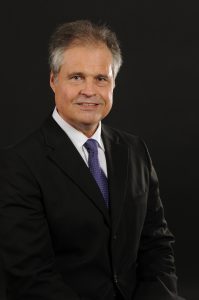UAMS Diabetes Update Presents Latest Treatments
| March 6, 2017 | Health care professionals and students gathered in downtown Little Rock on Feb. 17 and 18 to discuss the latest developments in treating diabetes at the 22nd annual UAMS Diabetes Update.
The symposium was presented by the UAMS Office of Continuing Education and co-sponsored by the Arkansas Department of Health. It featured sessions on improving diabetes patients’ quality of life through diet, medication, lifestyle intervention and other methods and the latest in prevention, diagnosis and treatment.
Keynote speaker Edward Gregg, Ph.D., chief of Epidemiology and Statistics at the Centers for Disease Control and Prevention discussed trends in diabetes diagnosis and prevalence, as well as future actions needed to improve treatment of the disease. Gregg highlighted the need for more research and community based approaches.

Mark Jansen, M.D., medical director for primary care at the UAMS Center for Healthcare Enhancement and Development, is the principal investigator of the study.
UAMS is playing a leading role in trying to improve diabetes treatment through a grant funded by Novo Nordisk and Sanofi,. The $390,000 grant, awarded to UAMS and Med IQ, a continuing medical education company, will focus on improving insulin treatment and identifying the proper time to introduce it to the patient as a therapy method.
Mark Jansen, M.D., medical director for primary care at the UAMS Center for Healthcare Enhancement and Development, is the principal investigator.
“Evidence shows we aren’t getting diabetes patients on insulin at the right interval,” said Jansen. “The purpose of this grant is to create an educational tool for our residents to understand at what point they should introduce insulin.”
All family medicine residents at UAMS Regional Campuses across the state will take part in the grant. UAMS will collect data to identify issues with the timing of introducing insulin therapy, then work to create educational modules to improve implementing insulin treatment. At the end of the grant, more data will be collected to evaluate the usefulness of the educational changes in improving care.
“We hope to change the process of learning for the residents so they can better understand insulin treatment and the timing for introducing insulin,” said Jansen. “If we’re successful, it means we’re doing a better job of training our residents to be better utilizers of insulin therapy at the appropriate time for their patients. Nationally, we’ll be able to take that guidance and broadcast it across the country so hopefully it will impact other prescribers of therapy based on our positive experience.”
